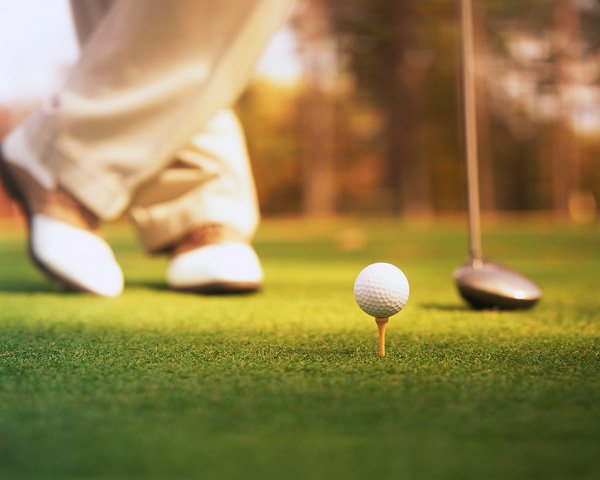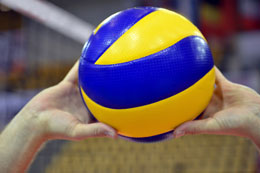Home Cooked Fish Fillets
Putting fish on the table can be easy. Sharing your catch with friends or enjoying a quiet meal alone with memories of your fishing trip are excellent ways to top off the fishing experience.
Deep Fried Fish
Throughout the south, fish fries are an informal way of entertaining for everything from small family gatherings to community-wide fund raisers and political rallies. We have hosted several fish fries at our home, and, through trial and error, have found several shortcuts to make fish a convenient part of our regular diet.
Some people find cooking fish distasteful because of the lingering kitchen odor. We've found cooking fish outdoors (whenever possible) on a camp stove is more acceptable. We use a deep aluminum skillet and set the stove on a table under a shade tree. When frying fish indoors, an electric fryer with a thermostat is best.
Serving hot foods hot and cold food cold is an important part of food safety, as well as enhancing the overall appeal. When cooking large quantities of fish, it's helpful to use an empty ice chest to hold the cooked fish while more cooking is done. We place several large layers of paper towels in the bottom of the clean chest, then add more paper towels with each layer of fish added. The lid is kept shut between each addition.
The Coating
There are a wide range of recipes for fish coating, and a few commercial coatings are available in the supermarket. When you find a coating recipe you really like, stick with it, but share it with others. The fish coating recipe appearing here is one I got from outdoor writer Wade Bourne. My husband Joe Davis adjusted and adapted it to our use. Joe once cooked professionally and he likes to experiment with different seasonings. We've found fish can be a convenience food for one or two people, especially when the coating is prepared and stored ahead of time. I mix the fish coating in double or triple batches, then store in a clean ice cream bucket in the deep freezer. This way it's easy to take out only the amount I need at a time. The premixed coating is also handy when you want to cook fish immediately following cleaning.
Fish Coating
2 cups cornmeal
1 tsp. dill weed
2 tbsp. flour
1/2 tsp. salt
1 tsp. garlic powder
1/2 tsp. lemon pepper
1/2 tsp. paprika
Fish fillets should be cut into pieces about the size of a cassette tape. Allow one-third to one-half pound of fish fillets per person. Dip each fillet in an egg wash made of two tablespoons of milk and two eggs, then roll in coating mix. Place in hot oil and cook until done. Drain fried fish on paper towels.
Fried fish is traditionally served with baked beans, cole slaw, hush puppies, french fries and a tall glass of iced tea.
Spice It Up
If you find the flavor of fish too strong but realize the nutritional value of making fish a part of your diet, you'll find the fishy flavor can be minimized by using lemon juice, wine, vinegar, ginger or garlic in your recipes. Don't be afraid to experiment with spices. A spice should be strong enough to realize it's there but mild enough that it can't be identified. Suggested spices for use with fish are basil, dill weed, ginger, garlic powder, lemon pepper, nutmeg, rosemary, parsley and sage. Enhance baked fish with cloves, mace and oregano. For beginning cooks, I suggest starting with dill weed ginger, garlic powder and lemon pepper.
Perfect Oil
The cooking oil you choose can make a big difference in the final results. We've found peanut oil is the best for frying fish. Peanut oil doesn't break down at high temperature and it can be reused by refreshing it with additional peanut oil.
Heat the oil to 375 degrees before adding fish. A famous chef once said you should "surprise" the fish when it's placed in the oil. Oil that's too cool causes excessive fat absorption. Oil that's too hot causes the coating to become too brown before the inside is done. After frying each batch, allow the oil temperature to recover before adding the next batch of fish. Don't fill the fryer more than half full of oil. This allows room for the bubbling that comes when the fillets are added.
When you're finished cooking all the fish you want, let the oil cool, then strain it to remove loose food particles and store it covered, in a cool place. We use several layers of cheese cloth for straining. (Loose food particles can cause discoloration and affect flavor.)
The Right Tools
When deep frying, it's helpful to have a long-handled, slotted spoon and long handled tongs. Some people like using a fryer basket. Always dip tools in hot grease first so food will release quickly. Have a shallow pan nearby to set hot tools on between uses.
When deep frying, I recommend using a cooking thermometer. This inexpensive tool can prolong the life of the cooking oil while assuring the fish will be cooked at a safe temperature. Before using, place the thermometer in a cup of hot water to help prevent breakage. Be sure to dry off the thermometer first or the water will cause the oil to splatter.
Baked Fish
The healthiest, easiest way to prepare fish is baked in the oven. For us, a tasty way to bake fish is with wine. Choose a dry white wine such as Chardonnay. Place one-inch thick fish filets in a glass baking dish that has been lightly coated with a cooking spray, or lightly buttered, then pour wine over. Add a layer of lemon slices over the fish and bake at 350 degrees for about 30 minutes (15 minutes per side). Garnish with sauteed mushroom caps.
Another baking method involves a marinade. Place one-inch fish fillets in a mixture of two tablespoons each of oil, lemon juice and soy sauce and allow to stand for 30 minutes. Place fish in glass baking dish, reserving liquid for basting. Bake at 350 degrees for about eight minutes. Turn over the fillets, baste and bake another eight minutes or until done.
Serve baked fish with corn-on-the-cob, sauteed mushrooms, salad, a glass of white wine and a big piece of lemon pie.
Is It Done Yet?
No matter how you cook it, you'll know fish is done when it flakes easily and is no longer translucent. Deep fried fish will float to the surface when thoroughly cooked. Fish cooks best when it's evenly cut in a thickness of one inch. The rule of thumb for cooking time is 10 minutes per inch.
It's Good for You
Not only is fish a delicacy to savor but it's a healthy choice. Ideally, we should eat fish once or, when possible, twice a week. Fish is naturally low in cholesterol and saturated fat. A four-ounce serving of fish provides about one-third the recommended daily amount of protein, yet does so with fewer calories than red meat. Fish is low in sodium and also a good source of minerals and vitamins such as A, D, B-6 and B-12.
The scientific community became interested in fish as something more than food when observations showed Greenland Eskimos eat a diet rich in fish, yet have a low incidence of heart disease. The most significant benefit of fish in the diet is the omega-3 found in fish. Fish are the primary source of omega-3, a fatty acid believed to reduce heart disease and circulatory problems.
According to Dianna Colson, nutritionist, studies have shown that omega-3 may cause blood cholesterol levels to drop. Research suggests the ratio of low density lipoproteins (LDL) to high density lipoproteins (HDL) improves with the consumption of omega-3 fatty acid. Omega-3 is also believed to lower triglycerides and thin the blood, both of which reduce the risk of clogged blood vessels.
Long thought of as brain food, fish can now be labeled as heart food as well. Sometimes I wonder if it's the consumption of the fish that benefits our brains and hearts, or maybe it's the act of fishing itself. A quiet fishing trip at sunrise may not boost your omega-3, but it will surely help your heart. Stress seems to melt away while watching a new day dawn, bringing with it new beginnings. And you probably won't find a better way to help your brain than to spend a couple of hours listening to nature's song without the distractions of a ringing phone or fax machine.
Boat Ramp Follies
Late Spring Bassin


